Understanding the lighting requirements and the best heat lamp for blue tongue skinks can be confusing for some beginners. It is entirely understandable for noobs with their skinks.
While looking for the best light for blue tongue skink, you might find tons of different varieties and options to pick from. Although there are many options available with great features, choosing the wrong fixture can be a threat to your skink’s health. Don’t worry, though, because, in this article, I will tell you everything you need to know about the blue tongue skink lighting setup.
Here, we will talk about the exact type of heat lamp you need for your skink’s well-being and where you should place each of them. If you are looking to achieve the ideal temperature in the skink’s tank, then the FAQ on skink lighting will be helpful.
Let’s first learn about the best heat lamps for blue tongue skinks, and after that, we will learn about if they need them or not.
Post Contents
Best Heat Lamp For Blue Tongue Skink
If you are looking for the best UV bulbs, here is a good guide where I have explained every detail of UVB bulbs and their placement in the skink’s tank. First of all, the UVB bulbs only provide little heat, whereas heat lamps give more heat exposure in a particular basking area.
Here are the 3 best heat lamps for blue tongue skinks
1. Zoo Med Heat Lamps 100 Watt
Talking about its Wattage, it comes with Wattage and weighs around 0.19 lbs. It has 3 packs of basking spot lamps having 100 Watt each. It also has double reflective, which expels more heat in a particular area for your skink basking. I have found these lamps best for diurnal reptiles like blue tongue lizards.
If you are looking for a heat lamp that can also increase the gradient temperature inside their tank, this is one. It has been backed by hundreds of reviews on Amazon. It is best for lizards like blue tongue skinks but not for lizards or reptiles like chameleons.
The only downside that I find in this box, is they don’t include UVB. Another complaint made by existing customers states that although it is inexpensive, it doesn’t last long. This is why I have come up with a second option as well for you to pick from.
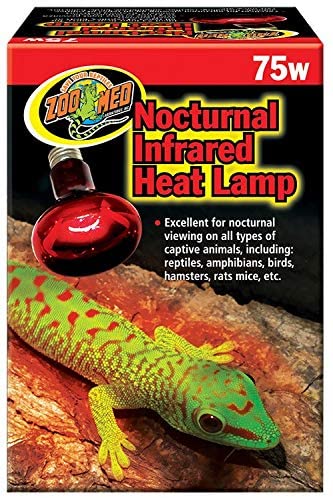
2. Altobooc Heavy Duty Heat Lamp With Stand
It’s a little more expensive than the first option, but it’s a heavy-duty adjustable heat lamp that comes with a stand and hook. I don’t know if you know this, but heat lamps must be placed on top of their tanks. This kind of lamp that comes with a stand tends to help lizards requiring a direct heat source from the top of its tank.
It is perfect for other cold-blooded reptiles as well. It also comes with a metal hook and reusable fastening cables to support the setup efficiently. You can adjust both the length and the height of these heat lamps precisely to match the heat requirements and design of your blue tongue skinks.
As it is a heavy-duty heat lamp, the robust construction of this stand always guarantees reliable usage free from rust or deformation for years. It also comes with an assembling guide making it easy to install.
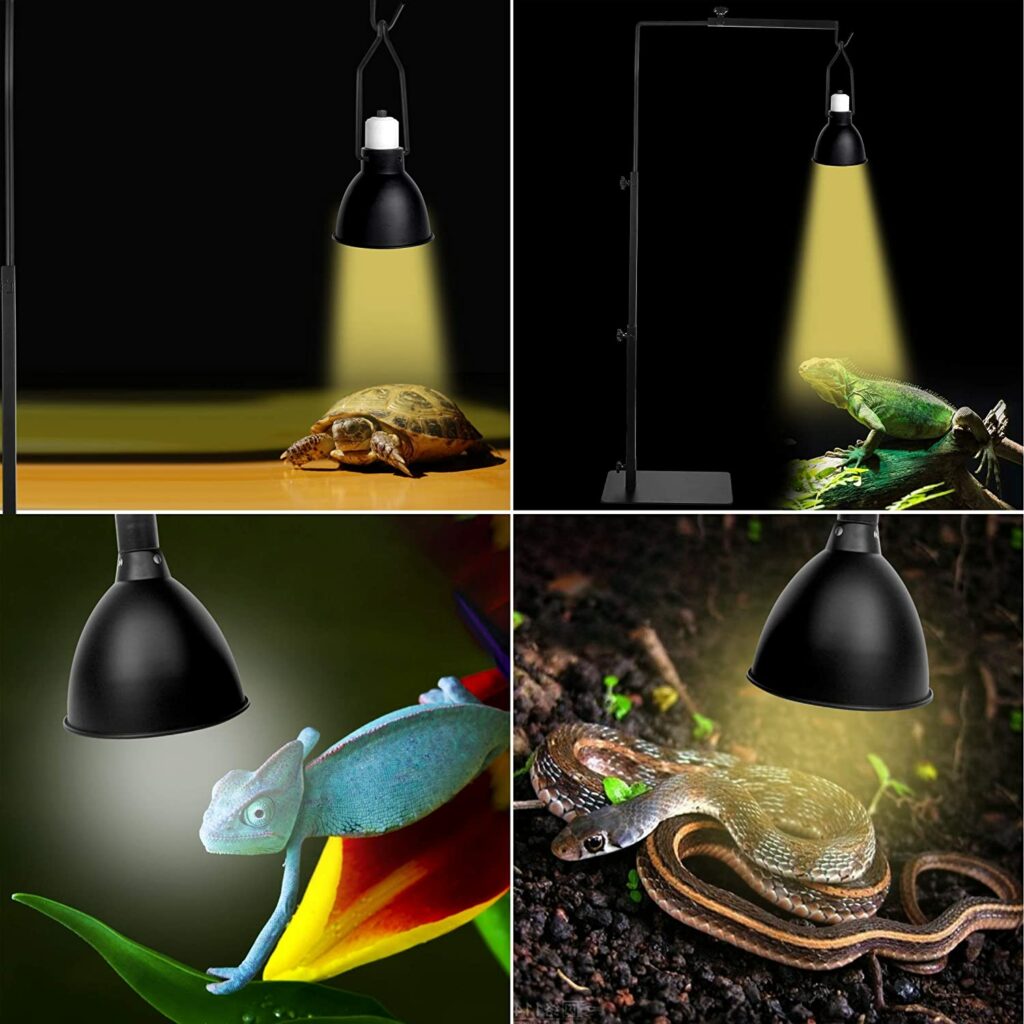
3. Reptile Heat Lamps With Dimmable Switch
Here is another excellent option that comes with a dimmable switch. It is more of an adjustable basking bulb for smaller tanks. It is ideal for any blue tongue skink habitat that needs light and heat sources.
The pros of having this bulb are an anti-burn high, temperature resistance bulb that comes with a metal tube. It comes with two 25 Watt bulbs and one 50-watt bulb with a floating thermometer. It is black ( my favorite) and made up of ceramic. The only downside I find is its tube and limited cable length.
It also gives improved reflector quality, enhancing the UVB spectrum for your skinks. This product also offers a bonus. The manufacturer provides a waterproof floating thermometer with a suction cup as a bonus to assist you in maintaining your skink habitat temperature.
It can also support various e27 bulbs. Hundreds of global reviews have backed these lamps, and most of them claim it a perfect light for reptiles
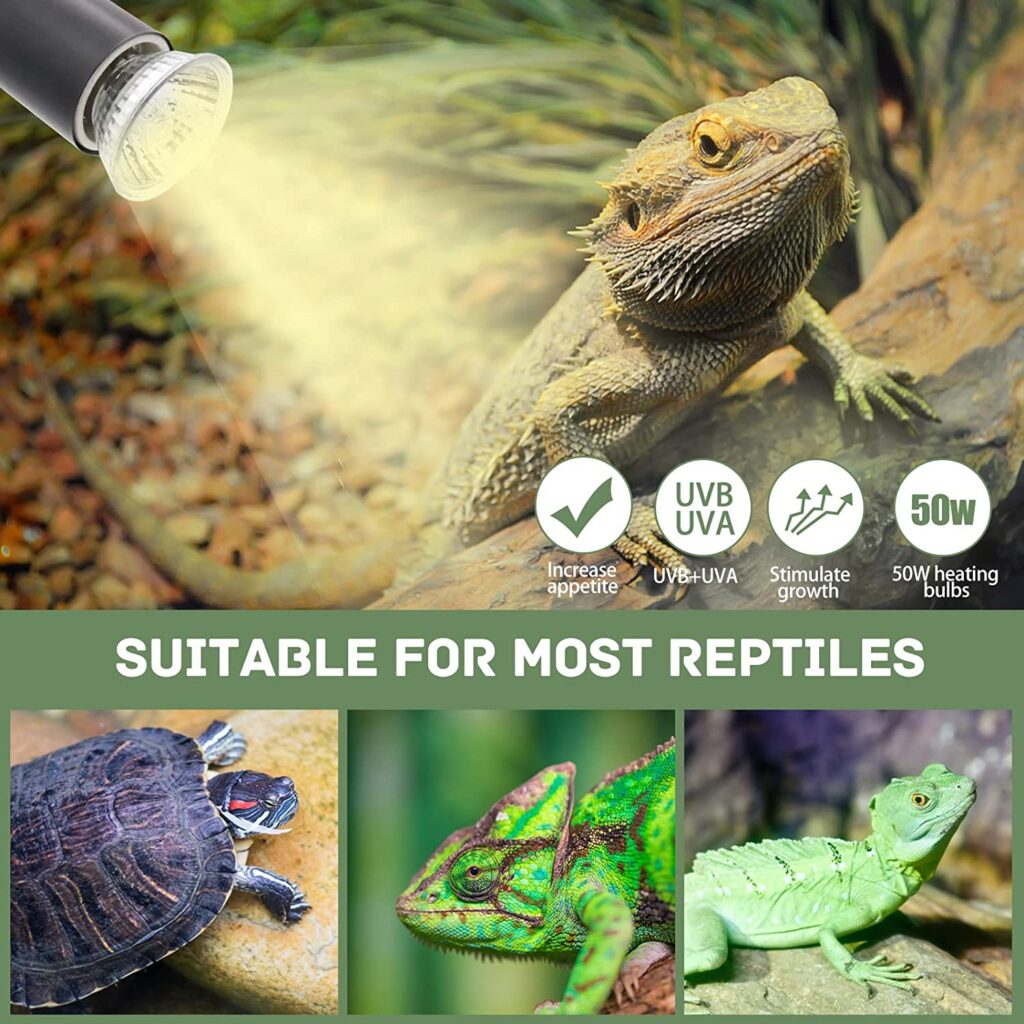
Do Blue Tongue Skinks Need Heat Lamps?
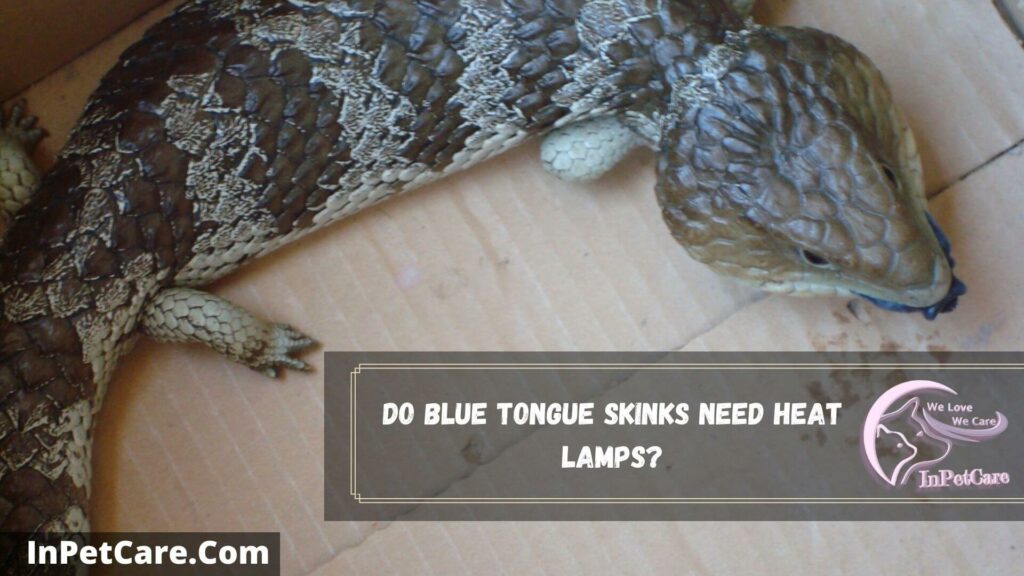
Yes, blue tongue skinks need heat lamps as the tank’s glass or plastic between the bulb and skink cannot pass through. This is why heat lamps are required for proper basking. However, these heat lamps should be turned off at night because skink loves darkness for an appropriate sleep cycle.
Consider getting the best heat lamps that don’t pierce their eyes or create reflection when hitting the tank’s glass. All these things can disturb your skin sleep cycle resulting in health issues.
Plus, not providing heat lamps to your blue tongue skink can make them go in brumation. It is essential to offer heating lamps that minimize a desert-like environment for your skink.
It is essential to place the headlamps above the tank or place them as an under-tank heating pad. Being ectothermic lizards, a blue tongue lizard will need heat and light from an external source.
However, you should avoid placing the heat lamps under the tank as most of the heat sensors on a blue turn lizard body tend to be on the top, not on the bottom. Providing a heating source from above will be the safest option as skink tends to have 90% of the heat sensor on top of their body. Let’s learn how many watts a blue tongue skink needs.
How Many Watts Does A Blue Tongue Skink Need?
Blue tongue skink needs 40-70 Watt for their well-being. It also depends upon its enclosure size, individual activity level, and varying conditions. Make sure to have a digital thermometer to get an accurate temperature reading.
Just to let you know, blue tongue lizards tend to spend most of the day around heat sources. Blue tongue skink needs a basking temperature of 38°C.
Best Lighting For Blue Tongue Skink
In the wild, you might have noticed blue tongue lizards getting all of their light, heat, and UV radiation directly from the sun. In captivity, it becomes essential to mimic their natural environment for the health of these skinks.
Without getting a good heat source or UV radiation, your blue tongue skink will always be at risk of improper shedding, low appetite, sluggishness, and health hazards. Talking about the best lighting for skinks, the visible light spectrum is essential as it provides a broad range.
The temperature gradient should be 20-25° C at the more fantastic end of the tank with a basking spot of 36-38° C. Make sure to run all the heating elements on the thermostat, and it is already set to turn off when the temperature of the tank touches the maximum of 27-28° C. Above 28° C is always considered as overheating.
Always choose the best lighting that provides visible brightness. Avoid getting any artificial light from local stores as it also contains a small amount of UVC wavelengths that is a health hazard to your skink’s eyes.
In conjunction with blue tongue skinks vision, you should consider getting new in lightning. Regular high light bulbs are meant for proper stimulation and brightness.
What Lighting Do Blue Tongue Skinks Need?
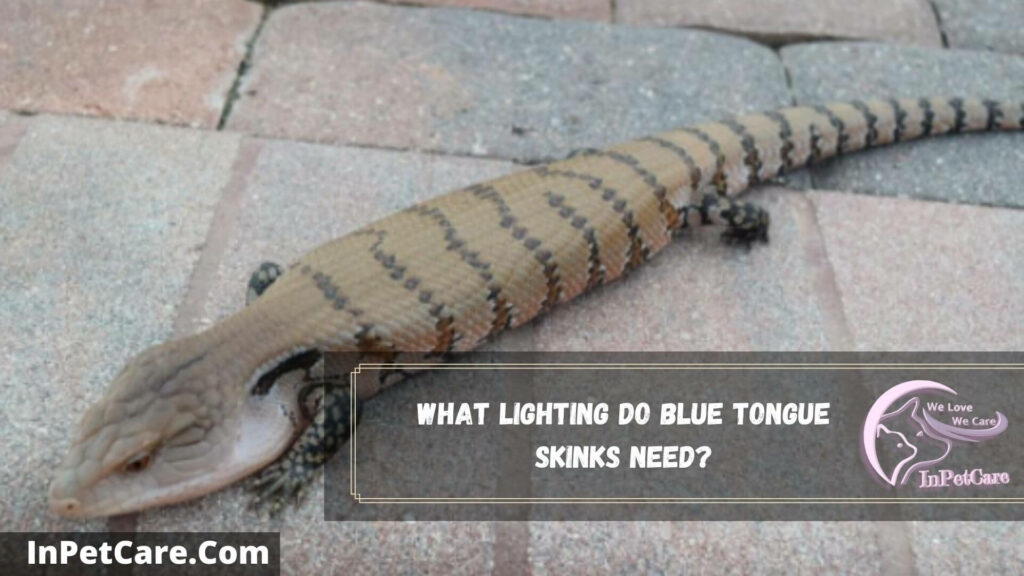
To give your blue tongue skink better stimulation and brightness, consider getting a broad spectrum of high light bulbs. If you are looking to provide an excellent vision to your skinks, then think UVB lighting. The bulbs that emit 175-360 jam cm^2 are the best lighting for blue tongue skink.
I don’t know if you know or not, but proper stimulation can make a massive difference in blue tongue lizard health. Ultraviolet radiation is 100% important for the health and longevity of your blue tongue skinks.
Without getting a healthy amount of UV, they will not absorb calcium properly, leading to metabolic bone diseases.
Do Blue Tongue Skinks Need Heat At Night?
Blue tongue skinks need a little heat at night, but only if your house or the tank is not warm enough for their comfort. However, it would be best if you used a ceramic heat bulb as a nighttime heat source for your skinks to avoid disturbing their sleep cycle.
A ceramic heat bulb provides no light at all to disturb your skink sleep cycle. I don’t know if you know this or not, but if you keep your house warm enough and the temperature inside their tank constant, you don’t have to keep the heat source on at night.
Fortunately, you don’t need to worry about your tank’s night temperature being colder in most cases, but you still must not let it get too hard. At night, they will need dark in their tank for proper sleep. Plus, the cold makes your lizard more active during the day. The cold period allows them to rest at night.
In the morning, If you happen to find your skink being cold to the touch, you shouldn’t worry because they are cold-blooded lizards and will naturally warm up once they start basking again throughout the day. Avoid keeping the tank too warm at night because your skin can also become ill.
Check Our Homepage: InPetCare.com

94% of pet owners say their animal pal makes them smile more than once a day. In 2007, I realized that I was made for saving Animals. My father is a Vet, and I think every pet deserves one. I started this blog, “InPetCare”, in 2019 with my father to enlighten a wider audience.
